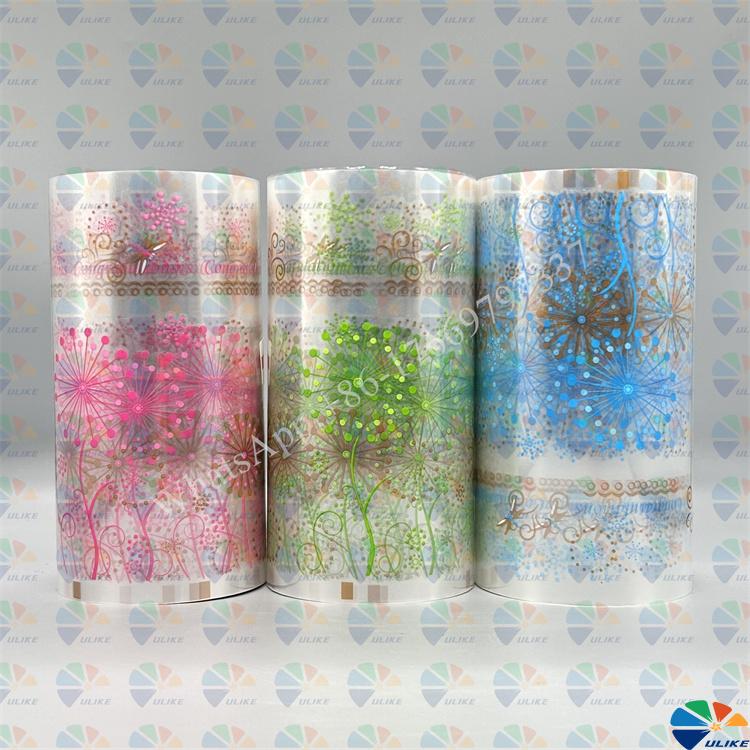Tips on how to adjust the color of thermal transfer inks, so that color adjustment is no longer a problem!
Tips on how to adjust the color of
thermal transfer inks, so that color adjustment is no longer a problem!
1 Tips on how to adjust the color of thermal transfer inks, so that color adjustment is no longer a problem
In the thermal transfer process, four-color overlay is generally used for printing. There are four basic colors, namely black, red, blue and yellow. These four colors can be mixed into thousands of colors.
Big picture of
thermal transfer ink
In actual printing, we often encounter problems of one kind or another in the color adjustment process. If we do not understand the relevant knowledge of ink color, it is difficult to solve these problems. The following is a brief introduction to several tips for adjusting the color of thermal transfer inks, so that color adjustment is no longer a problem!
2 Choose high-quality thermal transfer inks
To choose high-quality thermal transfer inks, the properties and hues of the original inks of different manufacturers are different. It is best to choose an ink product from a manufacturer. Before mixing, you need to understand the color saturation and viscosity of the ink. When the mixed ink is too thin or too thick, it is unqualified. The mixed ink should have a certain viscosity and fluidity, so that high-quality products can be printed.
3 Appropriate solvent is the key
In the process of mixing thermal transfer ink, it is key to choose the right solvent; when the surrounding production environment temperature is high, slow-drying solvents should be used, so that the evaporation speed is relatively slow. During this evaporation period, the hue of the ink can be observed and adjusted in time.
4 Matching of primary and secondary inks
When mixing thermal transfer spot color inks, pay attention to the matching between colors, confirm the main color tone of the printed product and the secondary color tone contained, the main color ink is used as the basic ink, and other inks are used as color-adjusting inks. In this way, the mixing of spot color inks will be faster, more accurate, and the amount can be better controlled.
5 Pay attention to the amount of black ink
When adding black ink, pay special attention to the amount added. Among all thermal transfer inks, black ink has a relatively strong coloring power. When too much is added, the color of the ink will deepen, forming a dirty phenomenon, and it will prevent the reflective degree of the substrate. Then you need to add quite a lot of other color inks to adjust the color. When the ink is adjusted, the color sample printed on the machine should be carefully compared with the color draft, and the color error should be corrected in time.
6 How to solve the uneven thickness of the ink layer
During the production process of thermal transfer ink, the thickness of the ink layer often appears uneven. The reason for this phenomenon is that the thermal transfer ink particles are too large or the dots are blocked. How to solve this problem? Teach you two tips:
a. The thermal transfer ink should be fully stirred and evenly used to avoid uneven pigment particles. If conditions permit, you can also filter the ink with a filter before use, so as to reduce the particles of the pigment.
b. Before starting printing, the surface of the printing plate must be cleaned first. In addition, after printing, the ink in the printing plate dots must be rinsed clean with a solvent and wrapped with a protective cover to prevent dust particles from clogging the dots and affecting the pattern quality of the next printed product.

![af]() Afrikaans
Afrikaans![sq]() Albanian
Albanian![am]() Amharic
Amharic![ar]() Arabic
Arabic![fr]() French
French![es]() Spanish
Spanish![ru]() Russian
Russian![de]() German
German![hy]() Armenian
Armenian![it]() Italian
Italian![ja]() Japanese
Japanese![ko]() Korean
Korean![pt]() Portuguese
Portuguese![hi]() Hindi
Hindi![az]() Azerbaijani
Azerbaijani![ro]() Romanian
Romanian![pl]() Polish
Polish![th]() Thai
Thai![el]() Greek
Greek![eu]() Basque
Basque![en]() English
English![zh-CN]() Chinese (Simplified)
Chinese (Simplified)![zh-TW]() Chinese (Traditional)
Chinese (Traditional)![be]() Belarusian
Belarusian![bn]() Bengali
Bengali![bs]() Bosnian
Bosnian![bg]() Bulgarian
Bulgarian![ca]() Catalan
Catalan![ceb]() Cebuano
Cebuano![ny]() Chichewa
Chichewa![co]() Corsican
Corsican![hr]() Croatian
Croatian![cs]() Czech
Czech![da]() Danish
Danish![nl]() Dutch
Dutch![eo]() Esperanto
Esperanto![et]() Estonian
Estonian![tl]() Filipino
Filipino![fi]() Finnish
Finnish![fy]() Frisian
Frisian![gl]() Galician
Galician![ka]() Georgian
Georgian![gu]() Gujarati
Gujarati![ht]() Haitian Creole
Haitian Creole![ha]() Hausa
Hausa![haw]() Hawaiian
Hawaiian![iw]() Hebrew
Hebrew![hmn]() Hmong
Hmong![hu]() Hungarian
Hungarian![is]() Icelandic
Icelandic![ig]() Igbo
Igbo![id]() Indonesian
Indonesian![ga]() Irish
Irish![jw]() Javanese
Javanese![kn]() Kannada
Kannada![kk]() Kazakh
Kazakh![km]() Khmer
Khmer![ku]() Kurdish (Kurmanji)
Kurdish (Kurmanji)![ky]() Kyrgyz
Kyrgyz![lo]() Lao
Lao![la]() Latin
Latin![lv]() Latvian
Latvian![lt]() Lithuanian
Lithuanian![lb]() Luxembourgish
Luxembourgish![mk]() Macedonian
Macedonian![mg]() Malagasy
Malagasy![ms]() Malay
Malay![ml]() Malayalam
Malayalam![mt]() Maltese
Maltese![mi]() Maori
Maori![mr]() Marathi
Marathi![mn]() Mongolian
Mongolian![my]() Myanmar (Burmese)
Myanmar (Burmese)![ne]() Nepali
Nepali![no]() Norwegian
Norwegian![ps]() Pashto
Pashto![fa]() Persian
Persian![pa]() Punjabi
Punjabi![sm]() Samoan
Samoan![gd]() Scottish Gaelic
Scottish Gaelic![sr]() Serbian
Serbian![st]() Sesotho
Sesotho![sn]() Shona
Shona![sd]() Sindhi
Sindhi![si]() Sinhala
Sinhala![sk]() Slovak
Slovak![sl]() Slovenian
Slovenian![so]() Somali
Somali![su]() Sudanese
Sudanese![sw]() Swahili
Swahili![sv]() Swedish
Swedish![tg]() Tajik
Tajik![ta]() Tamil
Tamil![te]() Telugu
Telugu![tr]() Turkish
Turkish![uk]() Ukrainian
Ukrainian![ur]() Urdu
Urdu![uz]() Uzbek
Uzbek![vi]() Vietnamese
Vietnamese![cy]() Welsh
Welsh![xh]() Xhosa
Xhosa![yi]() Yiddish
Yiddish![yo]() Yoruba
Yoruba![zu]() Zulu
Zulu


